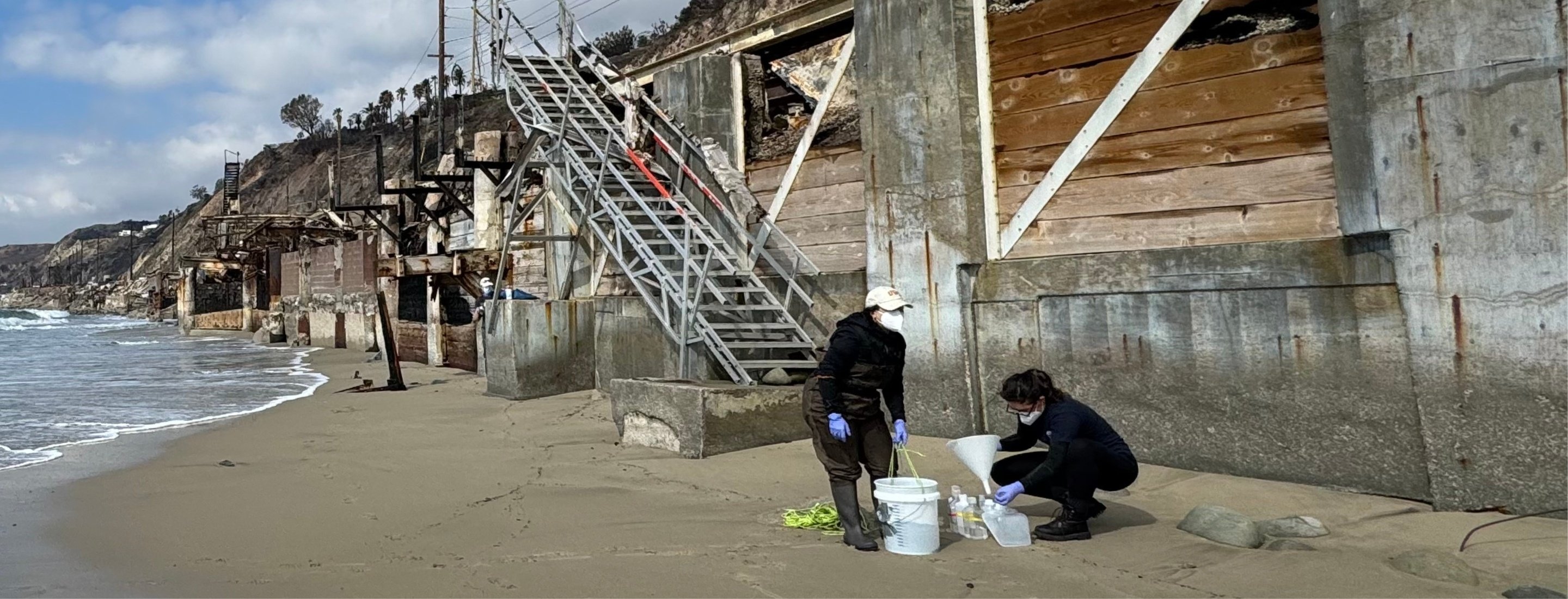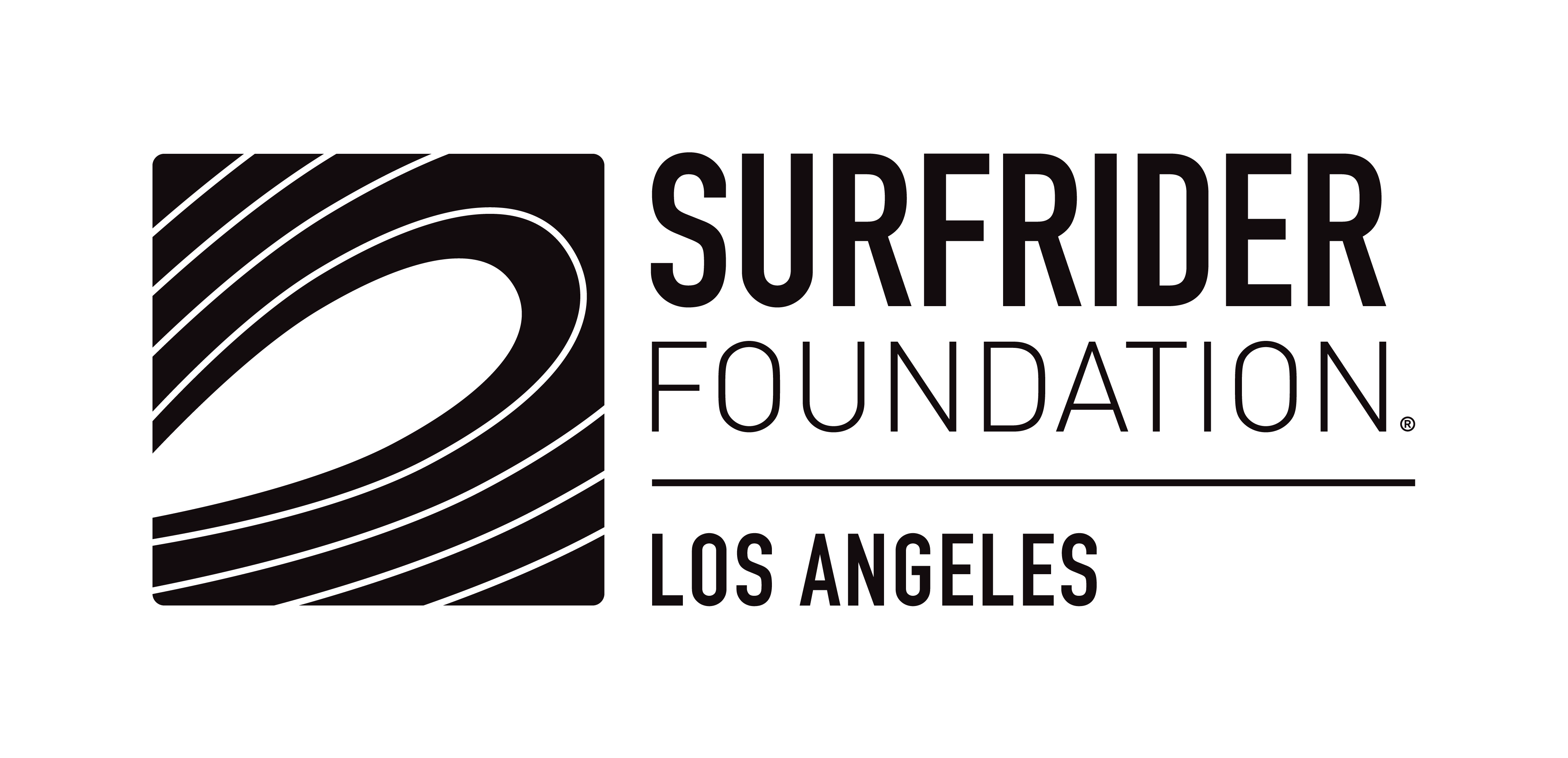
United for Clean Waters: A Collaborative Response
Wildfires don’t just leave behind scorched landscapes, they also impact our waterways, beaches, and ocean. Following the recent Palisades and Eaton fires, Surfrider LA has been actively involved in response efforts, collaborating with SCCWRP (Southern California Coastal Water Research Project), Heal the Bay, the Proteocean Lab at USC, and other scientific institutions to investigate the effects of wildfire ash and debris on water quality along the Los Angeles coast.
 Surfrider and Heal the Bay Staff ready for a day of water testing near Topanga State Beach.
Surfrider and Heal the Bay Staff ready for a day of water testing near Topanga State Beach.
What Are We Testing For?
This collaboration involved a multi-pronged approach to testing and monitoring water contamination. The results will provide crucial insight into the levels of pollutants present in stormwater runoff and its impact on nearshore waters. Surfrider LA worked alongside Heal the Bay and USC to conduct bacterial sampling, while SCCWRP took the lead in analyzing a broader range of potential contaminants, including:
- Heavy Metals (e.g., lead, arsenic, mercury)
- Polycyclic Aromatic Hydrocarbons (PAHs) & PCBs
- Benzene & Other Volatile Organic Compounds
- PFOS/PFOA (Types of PFAS, or ‘Forever Chemicals’)
- Bacteria (enterococcus, a fecal indicator bacteria)
We sampled many of these same toxins after the Lāhainā fire on Maui. Learn more about these compounds and how they can enter the ocean following a fire here.
It is important to note that the Surfrider LA Blue Water Task Force team is currently on pause to keep our volunteers safe. Our chapter exclusively tests for enterococcus bacteria, which serves as a fecal indicator bacteria. The results from our sampling on Monday, February 10, 2025, in collaboration with Heal the Bay and USC, reflect only enterococcus bacteria levels from affected areas. Other test results for heavy metals, PFAS, and other contaminants are still pending from Heal the Bay and USC.
Find the latest enterococcus bacteria test results here: Blue Water Task Force
 LA Chapter Manager Eugenia Ermacora takes precautions as she approaches the water's edge.
LA Chapter Manager Eugenia Ermacora takes precautions as she approaches the water's edge.
How Sampling Was Conducted
To get a clearer picture of the contamination levels, samples were collected before and after the January 26th rain event, allowing for comparative analysis of pollutant levels before stormwater runoff transported fire debris into the ocean. Heal the Bay and USC focused on bacterial contamination, while SCCWRP and other groups analyzed the presence of heavy metals and chemical pollutants. The Los Angeles County Department of Public Health collected their own water samples as well, and their early findings did not detect immediate risks to human health. However, ongoing monitoring is still needed, as fire-related contaminants continue to flow into the ocean through stormwater runoff.
How Long Until We Get Full Test Results?
Analyzing heavy metals and other complex contaminants takes time. Tests undergo multiple steps, including:
- Digestion & Extraction (Breaking down organic matter to isolate metals)
- Advanced Instrumentation (Using Inductively Coupled Plasma Mass Spectrometry, ICP-MS, for precision analysis)
- Quality Control & Verification (Ensuring results are accurate and repeatable)
This process can take two to four weeks (or more), depending on sample complexity and lab capacity. While this may seem lengthy, these steps ensure reliability and scientific integrity of the test results.

Is It Safe To Get In the Water?
Due to the heavy rain between February 12th and 13th, the Los Angeles County Department of Public Health issued a rain advisory and recommended avoiding any water contact for 72 hours at all LA County beaches, especially near storm drains, creeks, and rivers. Stormwater washes urban pollutants like lawn chemicals, animal waste, and bacteria into the ocean, making nearshore waters potentially unsafe. The advisory was in effect until 11:00 AM, Monday, February 17, 2025. Despite the advisory being lifted, the ocean water advisory (due to the fire runoff still being present along the coastline) from Las Flores State Beach to Santa Monica State Beach will remain in effect until further notice.
Is It Safe To Stay On the Sand?
While avoiding ocean water is crucial, beachgoers should also be cautious on the sand, especially in fire-affected areas. Winds or foot traffic could disturb microscopic particulates, leading to the inhalation of settled ash and other contaminants. For real-time updates on beach conditions, check LA County Beach Water Quality Advisories.

Cleanup Efforts & How to Get Involved
Surfrider LA and our partners are preparing safe and responsible beach cleanup operations, prioritizing public health and environmental restoration. When it is safe to revisit the shorelines, precautions will include Volunteer PPE (Gloves, masks, and protective clothing) and collaboration with Environmental Recovery Experts. Want to help? Enroll in cleanup updates here: Volunteer Sign-Up
Moving Forward: Strength in Collaboration
At Surfrider LA, we believe in the power of community and collaboration. Our response to this crisis wouldn’t be possible without the joint efforts of SCCWRP, Heal the Bay, the Proteocean Lab at USC, and additional research groups working together to monitor our coastal waters. Continued partnerships and long-term studies will be vital in assessing the full impact of the fires on our ocean and developing strategies for better preparedness in the future. Let’s protect our ocean, together.
Additional Resources
To stay informed, follow us on social media @SurfriderLA. Additionally, check out these key resources:
- Heal the Bay Beach Report Card: https://beachreportcard.org
- LA County Recovery Resources: https://lacounty.gov/recovery
- Disaster Recovery Support (Housing & Financial Aid): Fannie Mae Disaster Resources
